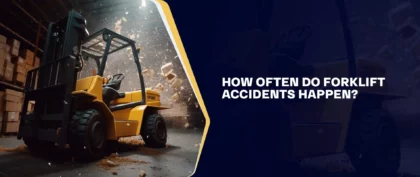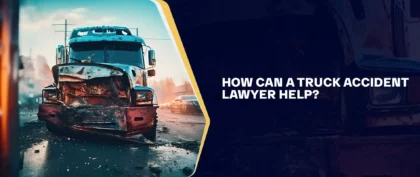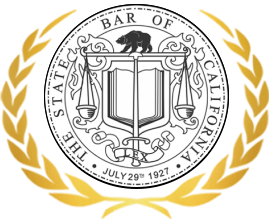If you have ever seen a truck traveling in the left lane of a freeway in California, you probably wondered, “Can trucks drive in the left lane?” There are many misconceptions surrounding the topic of 18-wheelers and other trucks traveling in the left-hand lane, or the so-called “fast lane.” Some states explicitly prohibit trucks from driving in the left lane. If you are a car or truck driver, you need to understand whether or not your state restricts which lanes can be used for trucks.
If you have been involved in a motor vehicle accident involving a truck traveling in the left lane, you might want to contact an attorney to discuss liability in your case. Contact our California truck accident lawyers at Arash Law to talk about your case.
What are the Lane Restrictions for Trucks in the United States?
The vast majority of states do not prohibit trucks from driving in the left lane. However, even though most states do not have a statewide ban on trucks in the fast lane, they do have rules to regulate the use of the left-hand lane of a freeway.

Many states simply state that motorists should drive in the right lanes if the speed of their vehicle is slower than the normal or legally permissible speed unless they need to pass another vehicle or make a left-hand turn. Motorists who fail to obey these laws can face serious penalties.
Even if your state does not have a statewide ban on the use of the left lane by trucks, cities or other local governments may impose lane restrictions on certain highways and roads. That is why it is important to speak with a lawyer who is familiar with traffic laws in your area to help you understand lane restrictions.
Can Trucks Drive in the Left Lane in California?
While California is not one of the states that prohibit trucks from traveling in the left lane, the state’s lane restrictions say that the left lane is for faster-moving vehicles. The rule applies to all highways in the Golden State. It means that if you are driving in the left lane and your vehicle is moving slower than the vehicle behind you, you must switch the lanes to allow the faster-moving vehicle to pass you.
While this technically means that any vehicle can drive in the left lane in California, they will have to switch lanes any time they are moving slower than a vehicle behind them. For this reason, trucks cannot drive in the left lane on a multiple-lane freeway in California because their speed is lower than the average speed of traffic on a highway. Under California Vehicle Code § 22406, the maximum speed limit for trucks is 55 miles per hour.
Which Lanes can be Used by Trucks in California?
According to the Federal Motor Carrier Safety Administration (FMCSA), there are nearly 160,000 accidents involving large trucks each year. Truck accidents cause over 4,600 fatalities and more than 77,000 injuries. California had the second-highest number of truck accident deaths in the country (the Golden State is second to Texas).
Given the high fatality rate in California, legislators sought to increase safety on the state’s highways by restricting the use of the left lane by trucks. Trucks traveling in the left lane can not only cause traffic jams and congestion but may also contribute to devastating crashes. Under California law, vehicles that travel at a speed that is lower than the normal speed of traffic on a freeway must use the right lanes unless they are using the left lane to pass another vehicle.
These rules apply to all vehicles traveling on California’s highways, including 18-wheelers, semi-trucks, tractor-trailers, and other trucks. There are additional restrictions for trucks on California’s highways depending on the number of lanes on a multiple-lane highway:
- On highways with three or fewer lanes traveling in the same direction, trucks can only travel in the right-hand lane.
- On highways with at least four lanes traveling in the same direction, truck drivers can use two right-hand lanes.
Trucks may only use the lane to the left when overtaking or passing another vehicle on a freeway. In addition, California has two truck-only lanes that can only be used for trucks. Both lanes are located on Interstate 5. Truckers must follow road signs and travel in the designated truck-only lanes when driving on these sections of I-5 in California.
Truck drivers who travel in the left lane of a highway are violating California’s traffic laws. Truckers are facing serious penalties for violations of traffic rules in California. The penalties include:
- Up to $100 in fines for a first offense
- Up to $200 in fines for a second offense
- Up to $250 in fines for a third and any subsequent offense
If you have been involved in a truck accident when the truck was traveling in the left lane, it is in your best interests to consult with a knowledgeable attorney to protect your rights and help you pursue the compensation to which you are entitled. Interestingly, California is one of few states with such stringent lane restrictions for trucks.
Why Trucks Traveling in the Left Lane is Dangerous
Truck drivers that drive in the left lane expose themselves and other people sharing the road with them to a number of hazards. A truck traveling in the left lane is dangerous because it interrupts the normal flow of traffic. Since trucks are prohibited from driving over 55 miles per hour on highways in California, a truck in the left lane would cause traffic congestion and increase the risk of preventable collisions.
The trucker’s decision to drive in the left lane can result in a collision when other vehicles are forced to switch lanes to pass the truck on the right. A truck traveling in the left lane is dangerous for several reasons:
- Rear-end accidents are likely to happen when a truck is traveling in the left lane, and faster-moving vehicles are unable to pass the truck on the left.
- A truck traveling in the left lane can cause sideswipe and merging accidents.
- The truck’s blind spot to the right is much larger than the blind spot to the left. For this reason, when a truck is traveling in the left lane, the driver may not see all vehicles traveling in the truck’s right blind spot, which may result in a devastating collision when switching lanes.
Trucks traveling in the left lane can be dangerous for everyone on the road, including the truck driver. For this reason, California Vehicle Code imposes the above-mentioned lane restrictions for large trucks to make our roads safer and improve the flow of traffic on highways.
Where are the Two Truck-Only Lanes Located in California?
Lane restrictions are not the only restrictions for trucks in California. Truckers and truck companies must also adhere to the federal trucking regulations, such as hours of service rules, which prohibit drivers from driving beyond the 14th consecutive hour after coming on duty. Among the many restrictions, California law also requires trucks to use truck-only lanes in designated sections of Interstate 5.
The two truck-only lanes are located on Interstate 5 at:
- State Route 14 in Los Angeles County (both southbound and northbound)
- State Route 99 junction in Kern County (only southbound).
Failure to use the proper lane can result in serious penalties for the truck driver.
Precautions to Take When Driving Near a Truck Traveling in the Left Lane
If you have a car, you probably know by now that you should always exercise caution when driving near 18-wheelers, semi-trucks, and other large trucks. However, you should take additional precautions when driving near a truck that is traveling in the left lane. Trucks have the largest blind spots compared to all other vehicles. A truck’s blind spot to the right extends across two lanes of traffic.
The blind spot in the rear extends as far as 30 feet behind the back of the trailer, while the front blind spot may extend 10 to 20 feet in front of the cab. Thus, when driving near a truck traveling in the left lane, you should be aware of its large blind spot to the right when passing the truck. The truck driver may not see your vehicle if you linger in the truck’s right blind spot. As a result, the collision may occur if the trucker decides to change lanes.
If you see a truck traveling in the left lane, take the following precautions to avoid collisions:
- Avoid lingering in the truck’s blind spots.
- When passing a truck on the right, overtake quickly and avoid cutting it off.
- Keep a safe distance between your vehicle and the truck when driving on a highway.
If you see a truck in the left lane, it is easy to lose your temper because you know that the trucker is violating California’s traffic laws. However, keep a cool head and avoid road rage or aggressive driving because these two behaviors may contribute to a preventable accident.
What to Do After a Left-Lane Truck Accident
While California law imposes many restrictions and traffic laws to keep you and other motorists safe, accidents may occur when someone fails to obey the rules. If you were involved in a traffic accident involving a truck traveling in the left lane, you might be entitled to compensation for your damages and losses.
When pursuing a claim against the truck driver, you will have to prove that the trucker’s negligence, recklessness, or carelessness was the result of your accident. Depending on the circumstances of your truck accident, you may be able to file a lawsuit against the truck driver’s employer (the trucking company).
Take the following steps if you have been involved in an accident involving a truck in California:
- Gather as much evidence as possible at the scene of the crash.
- Take photos at the scene of your truck accident.
- Talk to witnesses and write down their names and contact information.
- Collect information about the trucker’s trucking company.
- Seek medical attention to document your injuries.
- Keep a copy of the police report.
- Schedule a consultation with an experienced attorney to explore your options.
Get a case review from our truck accident lawyers at Arash Law to discuss liability in your particular case. Just because the truck driver was traveling in the left lane does not necessarily mean that they are fully at fault for the accident. You may also be held responsible if you contributed to the crash. Call (888) 488-1391 to talk about your case.





































